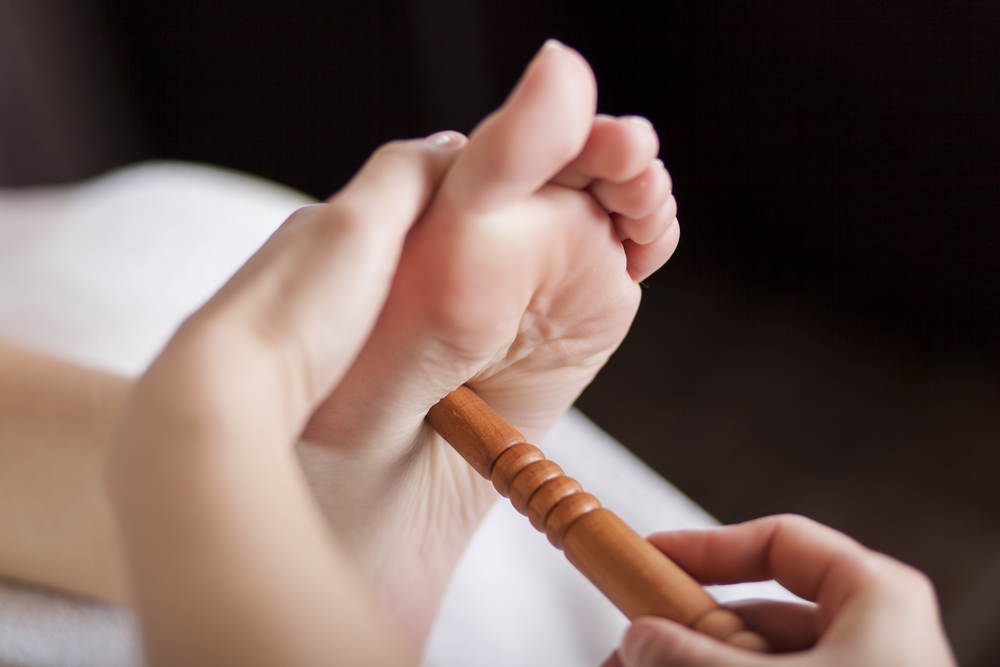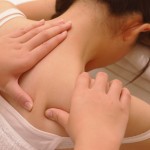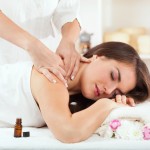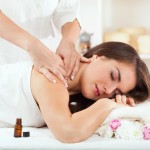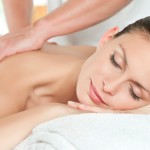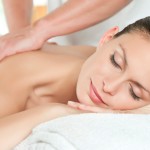The Pain – The ‘Trigger’ In the Muscle
A small contraction knot in a muscle, a trigger point (or TP) tends to feel like a pea buried in the muscle. It usually causes a steady, dull and aching, often deep pain, which occurs at rest or during movement, varying in pain severity from discomfort to acute. It also forces muscle fibres (to which it’s connected) to contract, thus leading to a tight feeling in the muscle. Sadly, too often GPs and orthopaedic surgeons aren’t aware someone may be suffering from a trigger point because it won’t show up on an x-ray or scan. Plus, as they feature the word ‘trigger’, TPs are never actually painful themselves, unless correctly located and prodded; rather they usually cause pain a short distance away.
In which case, to find a trigger point, a professional will feel for a tight muscle and the tight bands within it; then, by localising at ender point in the band, they’ll locate the TP. In order to confirm their suspicions, they may also press it, as this is likely not just to cause pain but also make the muscle twitch. Often, more than one trigger point will be discovered in a relatively small area of muscle, usually in neighbouring muscles too.
Technically referred to as my special trigger points (as they occur in the fascia, the thin wrapping around each muscle, as well as in the muscles themselves), these trigger points shouldn’t be confused with those that occur in skin, ligaments, tendons and scar tissue. Trigger points in – or associated with – muscles also shouldn’t be confused with muscle spasms or tears; the latter being a contraction of the entire muscle or physical damage to the muscle and/ or tendon fibres, respectively. Trigger points are known to cause or contribute to pain elsewhere in the body too (because they’re connected to muscles and thus indirectly nerves), such as headaches, earaches, neck and jaw pain, low back pain, tennis elbow and carpal tunnel syndrome symptoms, as well as many kinds of joint pain. Other physical symptoms associated with TPs include dizziness, numbness, tingling, weakness, nausea, sinus congestion, heartburn and false heart pain.
The Causes – Illness and Bad Habits
Trigger points develop owing to the tightening of the bands in muscles. These occur naturally as people age, but also due to everyday behaviour(repetitive work tasks or bad posture thanks to poor sitting or sleeping positions)or more unusual circumstances (major muscular strain from an accident, fall, sprain or fracture or excessive or unusual exercise).
Other illnesses or pain-related factors that could contribute to the symptoms initially caused by TPs (and would need to be identified and addressed in order to successfully treat them), include:
- Infections
- Allergies (especially wheat and dairy)
- Tension, stress, bad sleep, inactivity and smoking (causing poor oxygenation of tissues)
- Mechanical stresses (short leg, flat foot, poor posture or immobility)
- Nerve root pressure (sciatica)
- Nutritional deficiencies (especially of Vitamins C, B complex and iron)
- Hormone imbalances (low thyroid hormone levels, premenstrual and menopausal)
- Internal diseases and possibly some prescription medications
- Plus, chronic fatigue syndrome and fibromyalgia may also help TPs to develop
The Treatment – Massages and More
If you’re experiencing pain or discomfit from a recently acquired TP, then relief can be achieved via treatment in mere minutes; more acute problems within three to 10 days. However, treating muscle trigger points whose symptoms are longer-standing or have resulted in chronic conditions, will inevitably take longer; although some may be relieved in about six weeks. Treatment can come in the shape of local anaesthetic, saline or cortisone injections, acupuncture needling, cold spray (while stretching the muscle) and, of course, specific massage therapy from experienced and professional masseurs. Massage, which is naturally best applied as a treatment at an established and well-respected location such as the Spa at the Montcalm, is highly effective because it aids in easing the muscle and reducing its contraction, while stretching the TP’s knotted muscle fibres. Moreover, it will also increase circulation around the trigger point (which will have been restricted owing to the fibres’ contraction), enabling oxygen and nutrients to flow to the afflicted spot.
Indeed, after a little guidance, many patients too should be capable of massaging their own TPs. According The Trigger Point Therapy Workbook by Clair Davies, for effective massage you should:
- Use a tool such as a firm rubber ball in a deep stroking-like massage (like a repeated milking action), not static pressure
- Massage in one direction only, in short repeated strokes and releasing at the end of each stroke
- Each stroke should last one second; massaging of each TP should last one minute
- Massage each TP six to 12 times a day, until pressure on it is causing you pain at a level ‘2’ or ‘3’ on a pain-scale of ‘1-10’
- After massaging, apply a hot pack topped with a dampened flannel or towel to the treated area for a few minutes; following this, slowly and gently stretch the treated muscle through its full range of movement three times and pause to breathe deeply, relaxing between each cycle.
It’s worth noting that, although studies have demonstrated that thanks to a short period of rest and avoiding doing whatever activated the trigger point in the first place, pain may dissipate. However, if you were to examine your afflicted muscle you’d find it will still be tight, stiff and tender – especially when pressed. This is because – and don’t doubt it – the TP (or TPs) hasn’t actually gone anywhere; it’s merely lying dormant. The only way to get rid of a trigger point for good then is to actively hunt it out and treat it through massage therapy or other appropriate treatment.
Share the post "How to Identify Trigger Points in Your Muscles and Treat Them"

